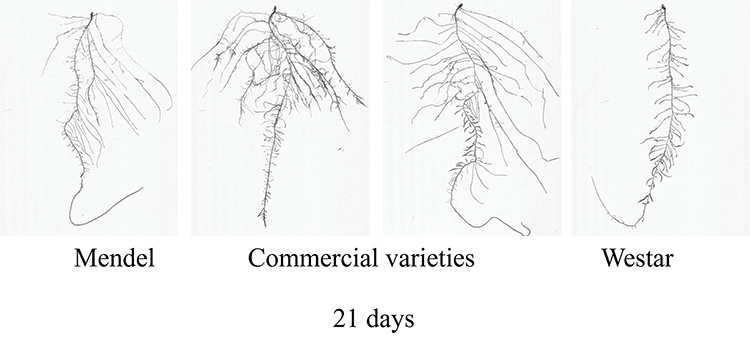Over-fertilization may increase clubroot
KEY RESULT:
While recommended fertilizer rates are required to improve overall plant growth and yield, over-fertilization may contribute to increased P. brassicae inoculum loads and greater clubroot pressure over the long term.
PROJECT NAME, PRINCIPAL INVESTIGATOR:
“Study of the effects of Brassica root architecture and fertilizer application on clubroot disease severity and yield” Stephen Strelkov, University of Alberta, with Rudolph Fredua-Agyeman, Sheau-Fang Hwang, Linda Gorim and Jocelyn Ozga
FUNDING:
Alberta Canola, Western Grains Research Foundation, Results Driven Agriculture Research
Clubroot targets canola roots, but not many studies in clubroot have focused on root traits or how nutrients may influence infected roots.
This project examined the role of root architecture and nutrient supply on both the severity of clubroot disease (caused by Plasmodiophora brassicae) and root traits to determine if root-type is an important trait to consider for clubroot resistance, understand the effects of nitrogen levels on clubroot resistance, and create a foundation for understanding genetic control of root morphology.
Researchers assessed 379 brassica lines for differences in root size, and selected 96 for this study. Only some were Brassica napus, the primary canola species. They grew these lines in greenhouse tubs using a soilless mix inoculated with P. brassicae pathotypes 3A and 3H. They also compared results for three fertilizer treatments – a nitrogen, phosphorus and potassium (20:20:20) mix at regular, high (4x) and no fertilizer rates.
Eight weeks after inoculation, researchers uprooted and washed the plants and assessed their clubroot severity.
Results
Root architecture and clubroot.
The lines tested produced wildly different root lengths. B. napus and B. oleracea possessed the largest and most complex root systems. This degree of variability with the Brassica family, significantly influenced by genotype and species, indicates strong potential to breed for root architecture suitable to different growing conditions – dry, compacted, saline soils on one hand or highly productive soils on the other. In this study, the brassica species with the smallest root system – B. nigra – appears to show the greatest resistance to clubroot. This resistance may simply result from the smaller root system actually escaping (not reaching) clubroot spores.
Nutrient rates and clubroot.
Clubroot symptoms developed five to 10 days earlier in plants fertilized with nitrogen, phosphorus and potassium at recommended and higher rates compared to unfertilized plants. However, after eight weeks, no significant differences in clubroot severity were observed. Conversely, fresh and dry gall weights significantly increased in the two treatments with fertilizer compared to the unfertilized treatment. Plant height, number of branches, and silique count were also significantly higher in fertilized treatments. Therefore, while fertilizer accelerated the onset of clubroot and promoted larger galls, fertilizer also significantly enhanced yield parameters.
While recommended fertilizer rates are required to improve overall plant growth and yield, over-fertilization may contribute to increased P. brassicae inoculum loads and greater disease pressure over the long term.





